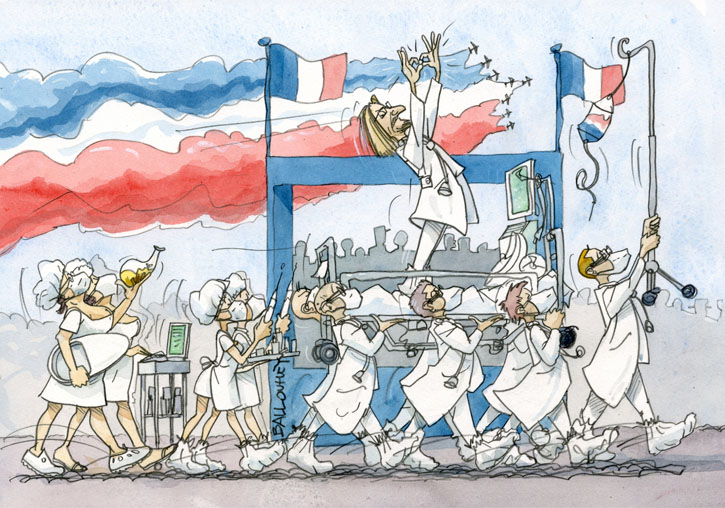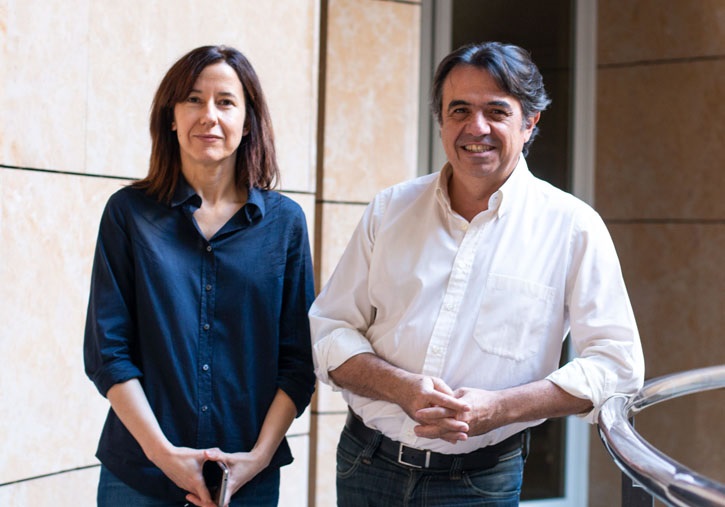Female doctors and nurses are underrepresented in COVID-19 graphic humor
- Scientific Culture and Innovation Unit
- October 25th, 2021

A study by the University of Valencia (UV) shows the little representation that female doctors and nurses have had in cartoons on COVID-19 where people from the health field appeared. The work, carried out by Martí Domínguez and Lucía Sapiña, from the research group Two Cultures Observatory of the academic institution, also highlights the stereotypical interpretation of the medical and nursing profession.
Women make up 70% of care and healthcare globally. Although male doctors are the majority in many countries, this is not the case in other areas of the world such as Europe where women represent 46% and America, where they represent 53%. In countries like Spain they are 55%, in Finland, 58%, and in Slovenia, 63%, to give a few examples. In nursing, a traditionally feminised profession, women are 84% in Europe and 86% in America.
“However, in the representation of these professions in cartoons on COVID-19, men are the protagonists, either as doctors or as other health occupations”, highlights Martí Domínguez, doctor in Biology and professor at the Department of Theory of Languages and Communication Sciences of the UV. Female doctors, but also nurses and other health professionals are underrepresented. The work has analysed 401 vignettes from 36 countries.
The research, published in the European Journal of Women’s Studies, highlights that 41.6% of the sample has a male doctor as the protagonist and 19% other male health professionals. “These results contrast with those of female doctors, who only appear as protagonists in 4.7% of the sample, and female health personnel, who represent 8.7% of the vignettes analysed”, concludes Lucía Sapiña.
On the other hand, the vignettes where both female and male doctors appear represent 9.7% of the cases. In this case, however, most of the female doctors have an accompanying role with respect to their male partner, who is the one who talks to the patient, diagnoses or takes the leading role in the action. The same goes for nurses. Although in some cases they appear as heroines, in most cartoons they are usually represented with a stereotyped role: as a companion of the doctor (man), as “guardian angels”, dressed in miniskirts or cleavage, or as tyrants and people of bad character.
Similarly, the couple doctor (man) with an assistant (woman) appears in 5.9% of the sample, while the opposite case – a doctor with a male assistant – only appears in 0.4% of the vignettes.
In addition, the study has also counted the images that include patients and in this case the dynamics of having a predominantly male representation is repeated. Thus, 74.1% of the vignettes with patients correspond to men while only 6.1% show a woman as a patient.
In short, the study highlights that in professions with a high presence of women, they continue to be underrepresented in the collective imagination. This media underrepresentation of female doctors and scientists is consistent with previous studies. The authors consider that some aspects may contribute to perpetuate this situation, such as the fact that the majority of cartoonists are men or as the use of the military metaphor to talk about the pandemic where the soldiers are represented mainly by men. They also emphasise that, although efforts have been made and are being made to improve the representation of women in the media, we must continue working to abandon the old stereotypes that are not at all in line with the new reality of the health professions.
The study is part of the research project FFI2017-85227-R of the Ministry of Economy, Industry and Competitiveness.
Research
Martí Domínguez is the director of Mètode, the journal for the dissemination of research edited by the Vice-Rectorate for Research of the University of Valencia, and principal investigator of the Two Cultures Observatory, a research group dedicated to the analysis of the relationships between communication and science.
Lucía Sapiña has a doctorate in Historical and Social Studies on Science, Medicine and Scientific Communication. She is a journalist at Mètode magazine and associate professor in the Department of History of Science and Documentation at the University of Valencia.
Article:
Domínguez, M., & Sapiña, L. (2021). She-Coronavirus: How cartoonist reflected women health workers during the COVID-19 pandemic. https://doi.org/10.1177/13505068211048402
Photo captions:
1.- Lucía Sapiña and Martí Domínguez. Photo Andrea Casas.
2.- In the analysed vignettes, not only do fewer women appear than men representing health professions, but they also have a stereotyped role. In the vignette, a group of nurses – dressed in miniskirts and cleavage – escorts the doctors.



















